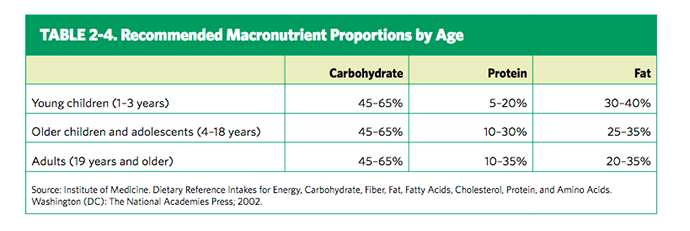One can’t venture too far down the fitness, weight loss, or wellness roads without encountering some discussion of what makes up the ideal macronutrient partitioning ratio (the amount of carbs, protein, and fats you eat) for the human body. And just about everybody misses a key point about partitioning – we’ll delve more into it in tomorrow’s post – but your critical challenge is finding the right partitioning, at the right time, for you.
[Just so we’re all on the same page in this short discussion, let’s follow accepted convention and think of macronutrients as those nutrients the body needs in large quantities – carbohydrates, proteins, and fats; we’ll designate micronutrients as those needed in smaller amounts – water and fat soluble vitamins and minerals, other esoteric cofactors, and some might even throw water in that mix. (This is a fairly oversimplified approach, though it serves our purpose here).]
Conventional Wisdom on Macronutrient Partitioning
Like many of you, I came of age in the 1970’s, during a time when the earnest folks at the USDA coordinated a number of very diverse interests (including significant representation from food growers/producers) to articulate Dietary Guidelines for us all; the infamous food pyramid arose during those early years.
The USDA continues to this day to offer their increasingly-challenged recommendations; you can read the latest version of their Dietary Guidelines for Americans (2010) here, all mind-numbing 112 pages.
Honing in on their recommendations for macronutrient partitioning, the table below was cut right from the document –

Sadly, despite the explosion of scientific evidence otherwise, these carbohydrate-centric, fat-phobic concepts still pervade much of traditional medical / dietary literature and practice; here’s a quick example from a university website resource (Washington State).
And (perhaps not so) shockingly, despite all of the learned counseling we’ve received, Americans continue to stuff a shocking array foods down our gullets as noted in the Dietary Guidelines (link above); the table below details the top food sources of calories by age groups…

Taking the table above at face value (assuming it’s reasonably representative), it’s no wonder the ‘typical American’ slowly and inexorably gains weight every decade past thirty (many starting much, much earlier). And despite exposure to the Dietary Guidelines over the past 40 years, we’ve become fatter, less healthy, less active, and according to recent news – less intelligent along the way.
There has to be a better path, and there is – Part 2 on macronutrient partitioning tomorrow.


